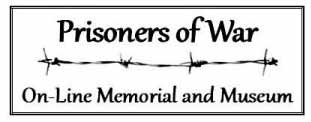Hal Colebatch on the influence of Australian unions during WWII
They did the same in Sydney during the Vietnam War. e.g. one example I can well remember is that the Sydney wharfies stole all the vast and expensive tool kits that went with each of the Centurion tanks as they were loaded on board a ship for Vietnam. They had refused to load the tanks until they were taught to drive them from the tank transporters when they arrived on the wharfs, [a very short distance] to the edge of the docks, which obviously gave them the chance to steal the many thousands of dollars of tools, which had to be replaced urgently by air to Vietnam.
As the government pursue the union on power and corruption, a timely new book reveals the union movement’s role in one of the most shameful periods of Australian history. What the wharfies did to Australian troops – and their nation’s war effort – between 1939 and 1945 is nothing short of an abomination. Perth lawyer Hal Colebatch has done the nation a service with his ground-breaking book, Australia’s Secret War, telling the untold story of union bastardry during World War 2. Using diary entries, letters and interviews with key witnesses, he has pieced together with forensic precision the tale of how Australia’s unions sabotaged the war effort; how wharfies vandalised, harassed, and robbed Australian troop ships, and probably cost lives. One of the most obscene acts occurred in October, 1945, at the end of the war, after Australian soldiers were released from Japanese prison camps. They were half dead, starving and desperate for home. But when the British aircraft-carrier HMS Speaker brought them into Sydney Harbour, the wharfies went on strike. For 36 hours, the soldiers were forced to remain on-board, tantalisingly close to home. This final act of cruelty from their countrymen was their thanks for all the sacrifice. Colebatch coolly recounts outrage after outrage.
There were the radio valves pilfered by waterside workers in Townsville which prevented a new radar station at Green Island from operating. So when American dive bombers returning from a raid on a Japanese base were caught in an electrical storm and lost their bearings, there was no radio station to guide them to safety. Lost, they ran out of fuel and crashed, killing all 32 airmen. Colebatch quotes RAAF serviceman James Ahearn, who served at Green Island, where the Australians had to listen impotently to the doomed Americans’ radio calls: “The grief was compounded by the fact that had it not been for the greed and corruption on the Australian waterfront such lives would not have been needlessly lost.” Almost every major Australian warship was targeted throughout the war, with little intervention from an enfeebled Prime Minister Curtin.
There was the deliberate destruction by wharfies of vehicles and equipment, theft of food being loaded for soldiers, snap strikes, go-slows, and demands for “danger money” for loading biscuits. Then there were the coal strikes which pushed down coal production between 1942 and 1945 despite the war emergency. There were a few honourable attempts to resist union leaders, such as the women working in a small arms factory in Orange, NSW, who refused to strike and “pelted union leaders with tomatoes and eggs”.
This is a tale of the worst of Australia amid the best, the valour and courage of our soldiers in New Guinea providing our last line of defence against Japanese, only to be forced onto starvation rations and to “go easy on the ammo” because strikes by the wharfies back home prevented supplies from reaching them.
A planned rescue of Australian POWs in Borneo late in the war apparently had to be abandoned, writes Colebatch, because a wharf strike in Brisbane meant the ships had no heavy weapons.
There was no act too low for the unionists. For instance, in 1941, hundreds of soldiers on board a ship docked in Fremantle entrusted personal letters to wharfies who offered to post them in return for beer money. The letters never arrived.
At one point in 1942 a US Army colonel became so frustrated at the refusal of Townsville wharfies to load munitions unless paid quadruple time, he ordered his men to throw the unionists into the water and load the guns themselves.
In Adelaide, American soldiers fired sub-machine guns at wharfies deliberately destroying their aircraft engines by dropping them from great heights.
Australian soldiers had to draw bayonets to stop the same Adelaide wharfies from stealing food meant for troops overseas.
You will read this book with mounting fury.
Colebatch offers various explanations for the treasonous behaviour of the unions. Many of the leaders were Communists obsessed with class warfare. Fervent “identity politics” led them to believe they were victims, and that servicemen and women were “puppets of capitalism whose lives were of no consequence”.
Contrary to popular belief, strikes and sabotage continued to the end of the war, even after the Soviet Union became an ally, writes Colebatch, who contends that the Australian Left may have wanted to undermine the military in preparation for revolution after the war.
Whatever the reasons for the defective morality of those unionists who sabotaged our war effort, the traitors have never been brought to account.
This story has been largely suppressed for 70 years because Labor and the Left have successfully controlled the narrative of history.
https://www.amazon.co.uk/Australias-Secret-War-Unionists-Sabotaged/dp/0980677874

Leave a Reply
Want to join the discussion?Feel free to contribute!